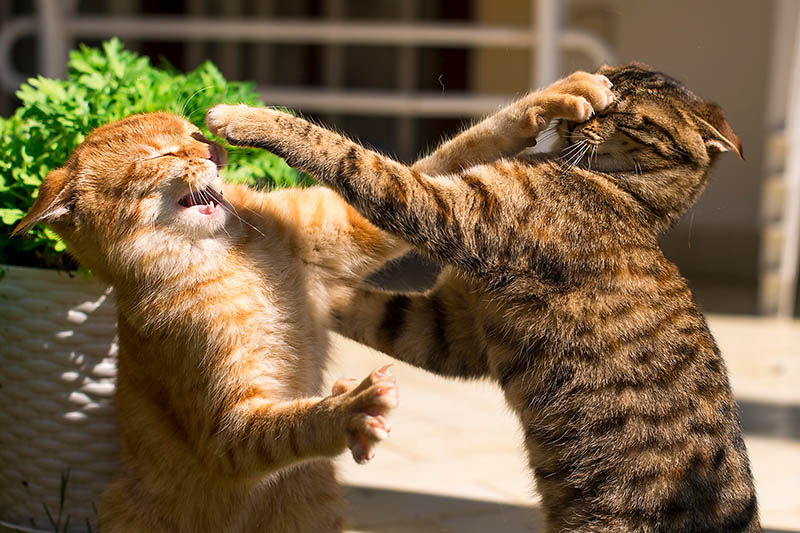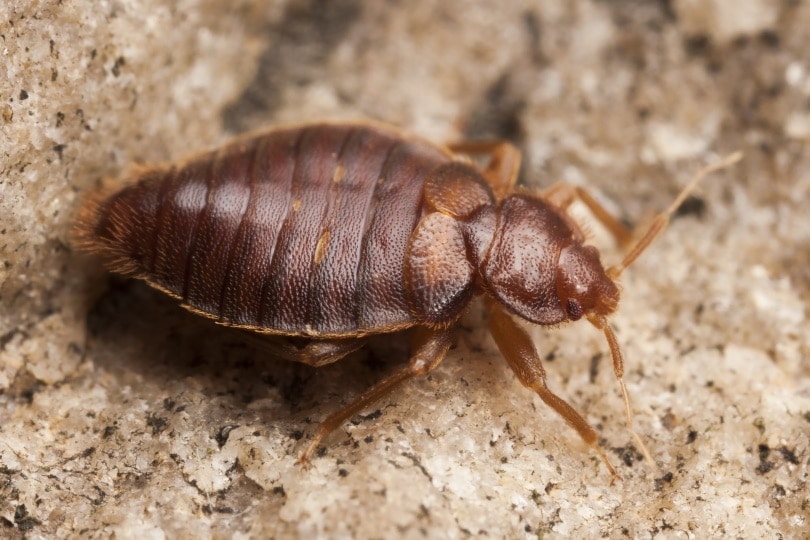How to Introduce Kittens to Food Instead of Milk: 8 Vet-Reviewed Steps
Updated on
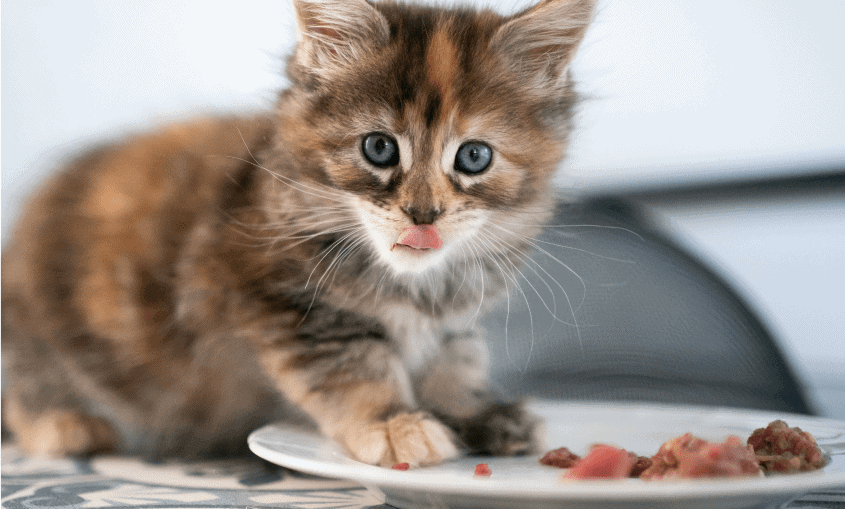
Around 4 weeks of age, kittens need to be introduced to solid food. Typically, they won’t consume that much at first. Instead, it’ll just be a few bites here and there. The point at this stage is to practice opportunities for eating. It’s a learning process!
The weaning process usually doesn’t end until 8 to 14 weeks. The longer that cats can nurse, the better. Studies have shown that cats that nurse longer have fewer aggressive behaviors later. Nursing isn’t just about food. It also provides essential socialization!
Of course, introducing food properly is essential. You want to make it a fun and easy experience for the kittens, to encourage them to wean at the right time. Cats that aren’t appropriately introduced may have a more challenging time switching over to solids.
The 8 Steps to Introduce Kittens to Food Instead of Milk
1. Start at the Correct Time
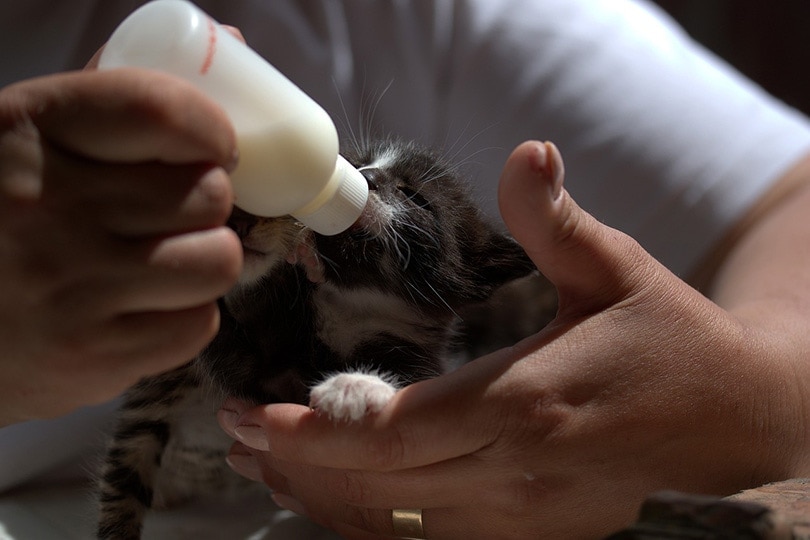
Starting at the correct time is essential for the weaning process. You don’t want to start too early or too late.
When Do Kittens Start Eating Food?
You should not introduce solid foods until the kittens are 4 weeks old. Starting before that may prompt early weaning. Forcing the kittens to wean early can cause physical and mental issues later in life. Kittens that wean too early are more likely to be aggressive and may continue kitten-like behaviors into adulthood, like sucking on soft objects.
Furthermore, kittens need to become steady on their feet and open their eyes entirely before solid food will do them any good. Starting too early may mean more work for you!
When Do Kittens Stop Nursing?
Kittens usually stop nursing for good around 10–12 weeks old. Longer is typically better! Some kittens do stop around 8 weeks, but preferably, you should stretch it to at least 10.
2. Follow the Mother Cat’s Lead
The mother and kittens should be allowed to make their own decision about weaning. It is best to follow their lead because they respond to biological cues that we can’t necessarily see.
Around 4 weeks, the mother will begin to nurse the kittens less. It won’t be significant at first, but the mother will typically stop allowing the kittens to nurse as much as they want. She may leave the area for longer periods to make herself unavailable for nursing. At this point, kittens may get hungry enough between nursing sessions to try solid food.
Feral mother cats typically start bringing food (prey) to their kittens during this period, though they typically don’t eat much of it. In captivity, this isn’t possible, so you will have to bring food for her.
3. Don’t Prevent the Kittens From Nursing
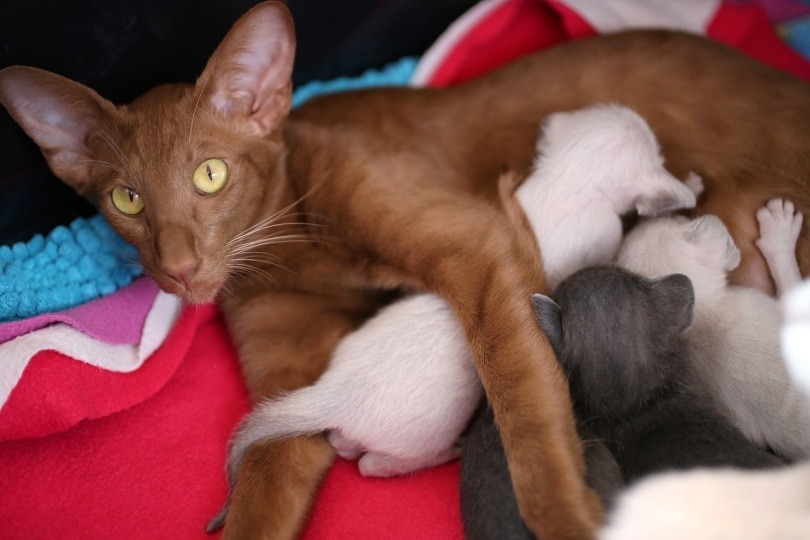
It is paramount that you allow the kittens to nurse. Although many will eat a bit of solid food around week 4, they don’t suddenly stop nursing once food hits their tongue. Their mother’s milk will continue to be their primary source of nutrition for a bit longer.
If the mother starts making herself unavailable for nursing, you should let her. This is part of the normal weaning process, and she is responding to biological cues that we can’t necessarily understand. She knows when her kittens can be weaned, and you should follow her lead.
4. Serve the Correct Food
Kittens need very soft food to begin with. They won’t have the ability to chew kibble, so typically isn’t an option.
Instead, look for wet food that is designed for kittens. Kittens need different food than adults, so it is paramount that they are provided with food specifically designed for them. The mother cat should already be consuming kitten food for the extra nutrition. If her food is wet, you can use hers. However, if you’re feeding kibble to her, you may find switching to wet food most helpful.
Alternatively, you can make kibble soft enough for kittens to eat. If your mother cat is already consuming kibble, this may be the easiest option. You can slowly serve less watery kibble as the kittens get older, making it much easier to switch them to dry food later!
To do this, add water to a small amount of kibble and then microwave it. The kibble should start soaking up the water and getting warm. Typically, kittens will take easier to warm food because they’re used to warm milk. You can adjust the water amount to make the kibble as runny or solid as you’d like. Add more water as needed.
- Keep your cat’s diet in check with our calorie calculator here.
5. Use a Plate
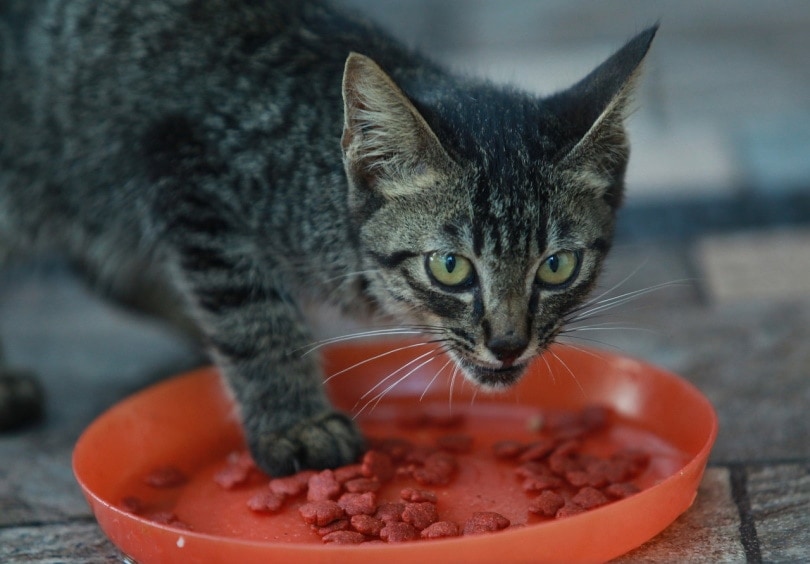
You may be tempted to put the kitten food directly into a bowl. However, kittens will likely have difficulty eating out of a bowl made for an adult cat. The sides will be too big, and kittens typically haven’t learned that bowls have food in them. If they can’t see the food, they likely won’t know that it is there!
Therefore, it’s much easier to use a plate. You don’t need anything fancy. A small dinner plate usually works just fine.
Prepare for kittens to get a bit messy, though! Many will crawl through the food. Always be ready to clean the kittens with wipes or towels after a meal, though you shouldn’t use water.
6. Start with Very Little Food
You only want to start with about 1 tablespoon of food per kitten. You likely won’t be separating each kitten as you feed them. It is perfectly fine to measure out 8 tablespoons for eight kittens and then put it all on a single plate. Some kittens might eat a bit more than a tablespoon, and others might not eat at all! That’s fine. The important part is that you aren’t forcing the kittens to eat or putting out so much food that they wean too quickly.
You don’t want to throw substantial amounts of food out at the end of each feeding, though. A small amount is best, and you can always add more if they want it.
7. Little and Often Are Essential
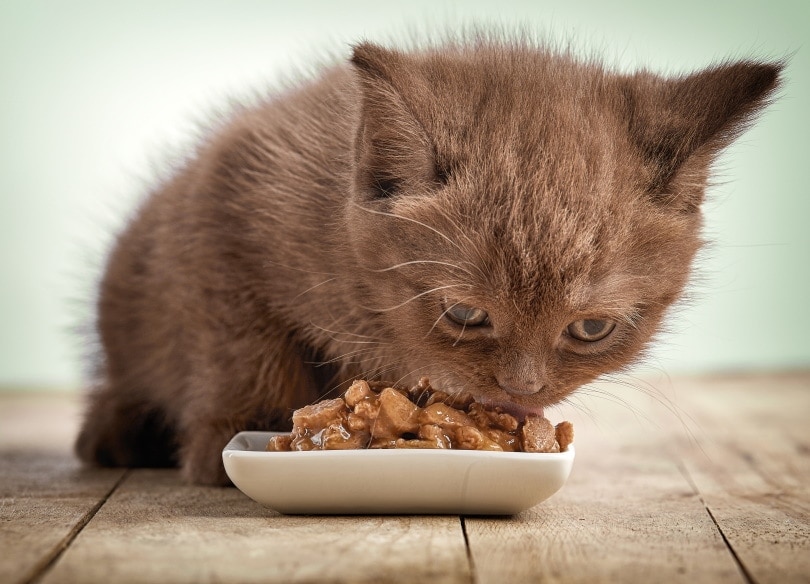
You should offer meals multiple times a day. Kittens are used to nursing frequently, and their solid food should be provided on a similar schedule—at least in the beginning!
You may want to start providing food only once a day. However, after that, you should quickly work up to as many as five times a day. These should be evenly spaced throughout the day. Expect kittens to eat large amounts at some points and hardly any at others. That’s normal. You want to offer it in case they are hungry and interested.
8. Slowly Increase the Amount of Food
As the kittens get older, you should slowly increase the amount of food that they get. Until the kittens are weaned, you don’t have to worry about them overeating. If they eat more solid food, it will likely cause them to drink less milk, and not necessarily eat large amounts of both.
The last thing that you want is for little kittens to go long without a meal, so continue to offer meals multiple times a day. By the time the kittens are 8 weeks old, you can lower the number of feedings to four or three times a day. It mainly depends on the size of the kittens.
Small breeds need more frequent meals than large breeds.
Final Thoughts
It’s essential to be patient. Kittens switch to solid foods slowly. It takes at least a month for them to wean completely. They will increase their food intake by only a little bit each day until they work up to consuming only solid foods. You want this to be a slow process. Kittens who continue nursing longer get the benefit of extra socialization, which impacts their later temperament. They are less likely to be aggressive or display kitten-like behavior later in life.
Overall, switching kittens over to solid food is quite simple. You offer it and then let them lead the way. Offering the right food at the correct times is crucial, though.
Image Credit:Image Credit: Nils Jacobi, Shutterstock



